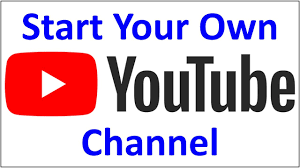How to Start a YouTube Channel: A Step-by-Step Guide
How to start a youtube channel? Starting a YouTube channel can feel like diving into an ocean of endless possibilities. Whether you want to share your passions, teach a skill, or entertain, YouTube provides the perfect platform to connect with millions worldwide. Ready to take the plunge? Let’s break it down step by step.
Outline
- Introduction
- Why Start a YouTube Channel?
- Step 1: Decide Your Niche
- Importance of Choosing a Focus
- Popular Niches to Consider
- Step 2: Research and Plan Your Content
- Understanding Your Audience
- Creating a Content Calendar
- Step 3: Set Up Your Channel
- Creating a Google Account
- Customizing Your Channel Name and Branding
- Step 4: Gather Your Equipment
- Must-Have Equipment for Beginners
- Budget-Friendly Alternatives
- Step 5: Learn Basic Video Editing
- Recommended Software
- Simple Editing Techniques
- Step 6: Create Your First Video
- Planning Your Script
- Tips for Recording
- Step 7: Optimize Your Videos for SEO
- Titles, Tags, and Descriptions
- Thumbnails That Grab Attention
- Step 8: Upload and Publish Your Video
- Step-by-Step Upload Process
- Setting Up Video Visibility
- Step 9: Promote Your Channel
- Social Media Strategies
- Collaborations and Networking
- Step 10: Engage with Your Audience
- Responding to Comments
- Building a Community
- Step 11: Analyze Performance Metrics
- Using YouTube Analytics
- Adapting Based on Insights
- Step 12: Monetize Your Channel
- YouTube Partner Program Requirements
- Other Revenue Streams
- Common Challenges for Beginners
- Overcoming Camera Shyness
- Dealing with Negative Feedback
- Conclusion
Introduction

You’ve watched countless YouTube videos, and now it’s your turn to shine. Starting a YouTube channel is more than just uploading videos; it’s about creating a space that reflects your passions and resonates with others. Let’s explore how you can kick-start your journey.
Step 1: Decide Your Niche
Importance of Choosing a Focus
Your niche is the foundation of your channel. It gives your audience a reason to subscribe and keeps your content focused.
Popular Niches to Consider
- Tech reviews
- Beauty and fashion
- Travel vlogs
- Gaming
- Education and tutorials
Choose something you’re passionate about and knowledgeable in.
Step 2: Research and Plan Your Content
Understanding Your Audience
Identify who you’re creating for. Are they teens, professionals, or hobbyists? Tailor your content to meet their needs.
Creating a Content Calendar
Plan your videos in advance to stay consistent. Tools like Google Calendar or Trello can help organize your ideas.
Step 3: Set Up Your Channel
Creating a Google Account
If you don’t already have one, create a Google account to access YouTube.
Customizing Your Channel Name and Branding
Pick a name that reflects your niche and personality. Add a logo, banner, and description to make your channel visually appealing.
Step 4: Gather Your Equipment
Must-Have Equipment for Beginners
- Camera (even a smartphone works!)
- Microphone
- Tripod
Budget-Friendly Alternatives
Don’t splurge initially. Start simple and upgrade as your channel grows.
Step 5: Learn Basic Video Editing
Recommended Software
- Free: iMovie, DaVinci Resolve
- Paid: Adobe Premiere Pro, Final Cut Pro
Simple Editing Techniques
Learn to cut unnecessary parts, add transitions, and include music for a polished look.
Step 6: Create Your First Video
Planning Your Script
Outline what you’ll say to avoid rambling.
Tips for Recording
Film in a quiet, well-lit space. Speak clearly and be yourself!
Step 7: Optimize Your Videos for SEO
Titles, Tags, and Descriptions
Use keywords your audience is searching for to rank higher in search results.
Thumbnails That Grab Attention
Design eye-catching thumbnails with bold text and vibrant images.
Step 8: Upload and Publish Your Video
Step-by-Step Upload Process
- Click “Create” > “Upload Video.”
- Follow prompts to add your title, description, and thumbnail.
Setting Up Video Visibility
Start with “Public” to reach a wider audience.
Step 9: Promote Your Channel
Social Media Strategies
Share your videos on platforms like Instagram, Twitter, and Facebook.
Collaborations and Networking
Team up with other YouTubers to grow your audience.
Step 10: Engage with Your Audience
Responding to Comments
Reply to viewers to build a loyal community.
Building a Community
Host Q&A sessions or live streams to connect on a personal level.
Step 11: Analyze Performance Metrics
Using YouTube Analytics
Check views, watch time, and audience retention to see what works.
Adapting Based on Insights
Adjust your content strategy based on your analytics.
Step 12: Monetize Your Channel
YouTube Partner Program Requirements
You’ll need 1,000 subscribers and 4,000 watch hours in the past 12 months to qualify.
Other Revenue Streams
Consider sponsorships, merchandise, or affiliate marketing for extra income.
Common Challenges for Beginners
Overcoming Camera Shyness
Practice speaking to the camera regularly to gain confidence.
Dealing with Negative Feedback
Focus on constructive criticism and ignore the trolls.
Conclusion
Starting a YouTube channel is a rewarding journey. It takes effort, consistency, and a dash of creativity. Don’t be afraid to make mistakes; they’re stepping stones to success. Remember, every big YouTuber started small—so why not you?
FAQs
1. How often should I upload videos?
It depends on your schedule, but consistency is key. Aim for at least one video a week.
2. Can I start a YouTube channel without showing my face?
Absolutely! Many creators use animations, gameplay, or voiceovers instead.
3. Do I need expensive equipment?
Not at all. Start with what you have and upgrade as your channel grows.
4. How do I gain subscribers quickly?
Focus on high-quality, engaging content and promote your videos on social media.
5. Is it too late to start a YouTube channel in 2025?
Not at all! There’s always room for unique, high-quality content.